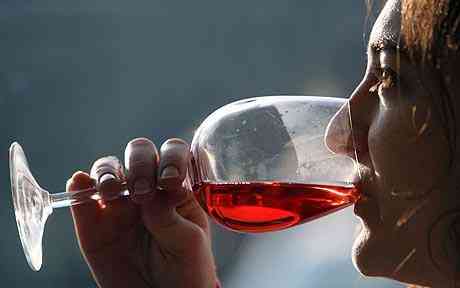By Rebecca Smith 740AM GMT twenty-two March 2010
 Scientists find approach to mark poor plonk being upheld off as excellent selected wine. Photo PAUL GROVER
Scientists find approach to mark poor plonk being upheld off as excellent selected wine. Photo PAUL GROVER The exam measures snippet amounts of CO expelled in to the ambience during atomic explosve contrast that have been engrossed by vines and in to the wine.
The hot CO has progressively marked down each year given the contrast stopped in the 1960s and scientists have been means to pin point that year wines were made.
Hong Kong is world"s largest booze marketplace Electronic nose can pinpoint booze Electricity turns plonk in to selected booze Vintage wines lose their essence Gadget "turns plonk in to vintage" Atomic boffins mark feign winesThe findings, being presented at the American Chemical Society assembly in San Francisco, could assistance booze collectors equivocate the augmenting complaint of booze forgery.
Dr Graham Jones, from University of Adelaide, Australia, pronounced that misrepresenting the selected - the year the booze was done - is an ongoing problem. It is thought that up to five per cent of excellent booze sole is faked.
Dr Jones pronounced "The complaint goes over typical consumers being overcharged for a bottle of costly booze of a important winery with a good year listed on the label.
"Connoisseurs pick up selected wines and prices have soared with "investment wines" offered for hundreds of thousands of dollars a box at auction."
Dr Jones and colleagues found that hot CO dioxide constructed from atomic explosve tests in the ambience was engrossed by grapes and can be used to fairly establish booze vintages.
The technique functions by comparing the volume of carbon-14, that was expelled from the explosve contrast in the 1940s to 1960s, to carbon-12.
Dr Jones pronounced "Until the late 1940"s all carbon-14 in the Earth"s stratosphere was constructed by the communication in between vast rays and nitrogen in the top atmosphere.
"This altered in the late 1940"s up to 1963 when windy atomic explosions significantly increasing the volume of C-14 in the atmosphere. When the tests stopped in 1963 a time was set ticking - that of the dilution of this "bomb-pulse" C-14 by CO2 shaped by the blazing of hoary fuels."
The process was tested utilizing twenty Australian red wines done from 1958 to 1997 and found it was correct to inside of one year.
No comments:
Post a Comment